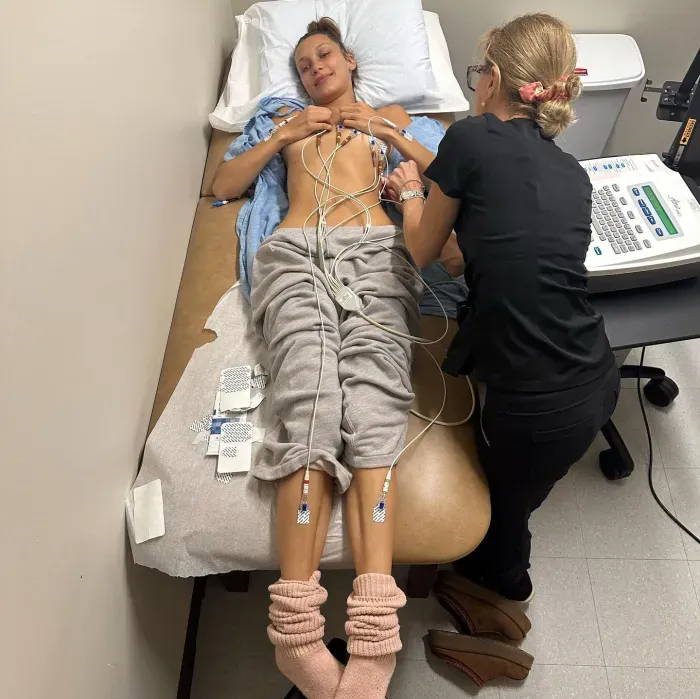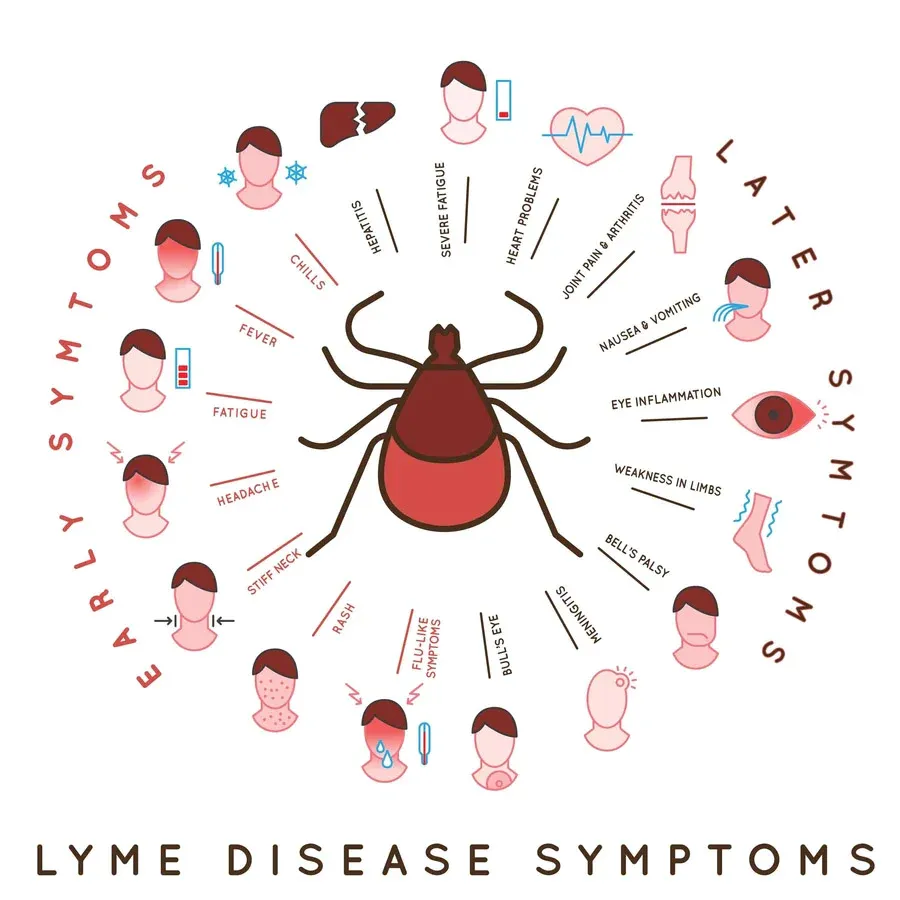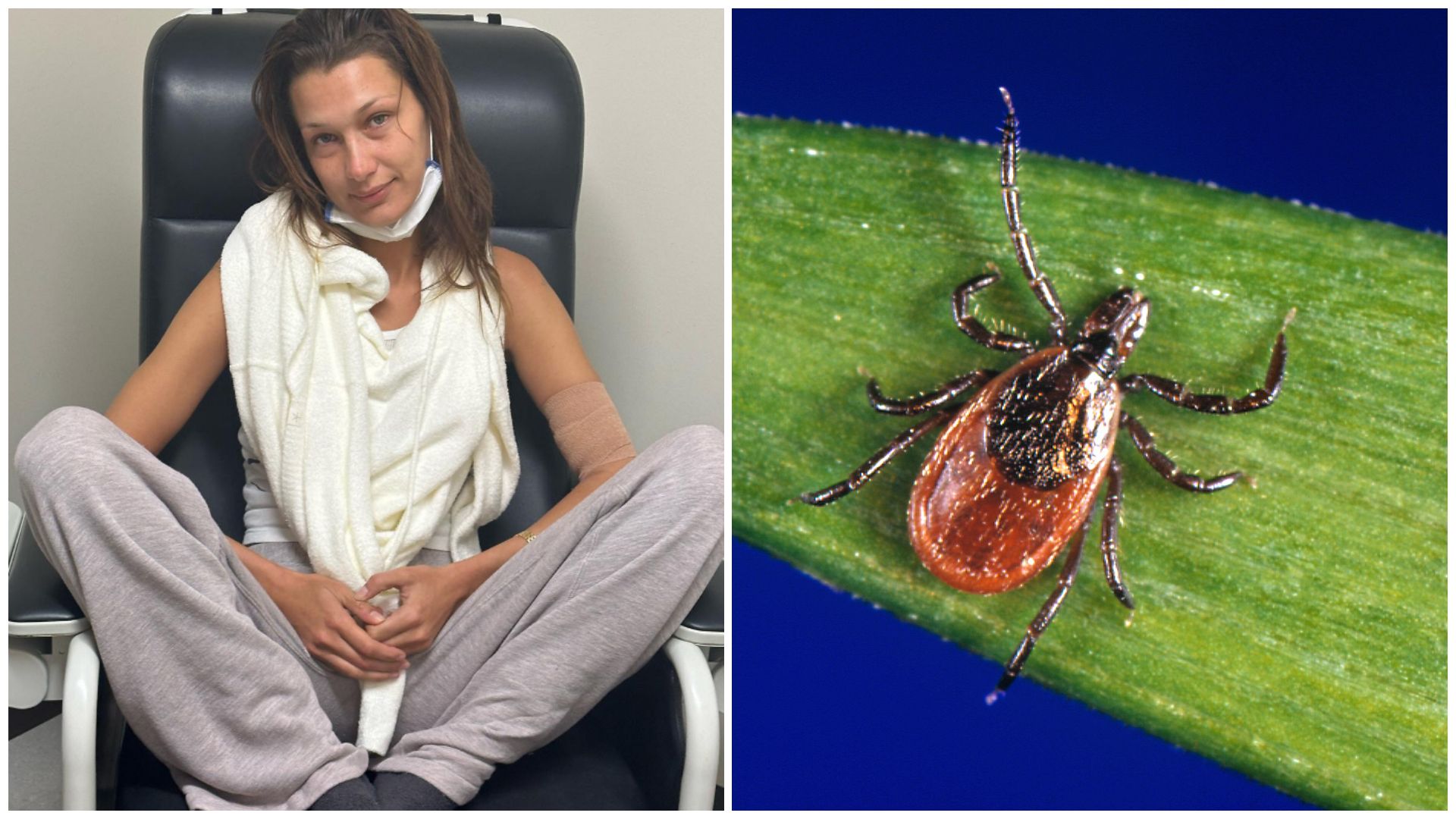Bella Hadid's Battle with Lyme Disease: A Story of Strength and Resilience
Bella Hadid, renowned for her stunning looks and successful modeling career, has been facing an ongoing battle with Lyme disease.

Introduction
In the world of fashion, glamour, and glitz, it's easy to forget that celebrities are not immune to the challenges that life throws their way. Bella Hadid, renowned for her stunning looks and successful modeling career, has been facing an ongoing battle with Lyme disease. Her journey is a testament to her strength, resilience, and determination to raise awareness about this often misunderstood illness.

The Stealthy Intruder: Lyme Disease
Lyme disease is a tick-borne illness caused by the bacterium Borrelia burgdorferi. The disease can have a wide range of symptoms, often making it difficult to diagnose. These symptoms can include fever, fatigue, joint pain, and even neurological issues. In some cases, the symptoms can persist for months or even years, significantly impacting the quality of life.
Bella's Diagnosis
Bella Hadid's journey with Lyme disease began in 2012, although she wasn't officially diagnosed until 2014. Initially, she struggled with a myriad of health issues that left her feeling exhausted and unwell. Despite visiting countless doctors, it took two years to identify the underlying cause of her symptoms. Bella's story highlights the diagnostic challenges many Lyme disease patients face, as the disease often mimics other conditions.
Raising Awareness
Raising awareness regarding Lyme disease plays a pivotal role in enhancing public comprehension of the associated risks, symptoms, and preventive measures. Lyme disease is a result of Borrelia burgdorferi, a bacterial infection that transmits to humans through the bite of infected blacklegged ticks. Notably, it stands as the most prevalent vector-borne ailment in the United States.
Effective strategies to heighten awareness about Lyme disease encompass:
- Educational Initiatives: Disseminating information about tick bite risks and prevention strategies forms a cornerstone in awareness campaigns. Utilizing public health initiatives, informative resources, and community gatherings fosters a greater understanding of the disease's implications.
- Prompt Medical Attention: Encouraging individuals to promptly seek medical care upon encountering symptoms like fever, headache, fatigue, and the distinctive erythema migrans skin rash is crucial. Timely intervention can significantly mitigate the severity of the disease's impact.
- Preventive Measures: Advocating for the application of insect repellents, swift tick removal, judicious pesticide use, and minimizing tick habitats contributes to preventing Lyme disease transmission. These practices are pivotal in reducing exposure to infected ticks.
- Research Advocacy: Supporting research endeavors centered around Lyme disease is integral to advancing our comprehension of the ailment. This research not only enhances our understanding of the disease's dynamics but also facilitates the development of more effective prevention and treatment methodologies.
In essence, raising awareness about Lyme disease is a multifaceted endeavor that demands collective efforts from healthcare organizations, communities, and individuals alike. By fostering knowledge and proactive measures, we can collectively combat the impact of Lyme disease and promote healthier, safer lives.
Bella's Advocacy Efforts in Lyme disease
Around 2013, Bella Hadid received her initial diagnosis of Lyme disease, and over the subsequent years, she has progressively revealed insights into her treatment journey. On August 6, 2023, she composed an extensive Instagram caption centered around "perseverance," underscoring her ongoing endeavors to enhance her well-being. In this post, she unveiled images of medical records dating back to 2013, which outlined some of her symptoms including extreme fatigue, muscle and joint discomfort, and chest pains. Alongside these records were snapshots of her with IV needles inserted in her arms and an array of sensors linked to her body. Bella Hadid characterized these visuals as "uplifting" in her caption, deeming them the most accurate representation of the "most enlightening experience" she has lived through.

Bella Hadid has also engaged in collaborative efforts with diverse organizations dedicated to Lyme disease research and education. Capitalizing on her celebrity status, she has adeptly drawn attention and resources to these initiatives. Her participation in fundraising events has bolstered research endeavors aimed at devising more efficacious treatments and diagnostic techniques for Lyme disease. Through her involvement, she has helped cultivate essential resources, propelling the advancement of our comprehension of the ailment.
Bella's willingness to openly share her narrative has spurred comprehensive media coverage surrounding Lyme disease. This amplified visibility has fostered inclusive dialogues concerning the condition, offering a platform for fellow patients to share their stories and experiences. In this manner, Bella Hadid's resolute advocacy serves as a beacon of inspiration, shining light on the plight of Lyme disease and uniting a community of individuals touched by the ailment.
FAQs
When did Bella get Lyme disease?
Bella Hadid has shared a new update on her years-long battle with Lyme disease, opening up about ongoing health struggles. The 26-year-old model, who was first diagnosed with the illness around 2013, has opened up throughout the years of Lyme disease treatments.
Who is younger Bella or gigi?
Gigi Hadid and her younger sister Bella Hadid have been voted as one of the most beautiful women on the planet.
Can Lyme disease be cured?
Although most cases of Lyme disease can be cured with a 2- to 4-week course of oral antibiotics, patients can sometimes have symptoms of pain, fatigue, or difficulty thinking that last for more than 6 months after they finish treatment.
Conclusion
Bella Hadid's journey through the world of fashion and fame has taken an unexpected turn as she faces the ongoing challenges of Lyme disease. In an industry where glamour often overshadows personal struggles, Bella's determination to raise awareness about Lyme disease stands as a testament to her strength and resilience.
Lyme disease, caused by the stealthy bacterium Borrelia burgdorferi transmitted by infected ticks, can manifest in a myriad of symptoms, making diagnosis and treatment complex. Bella's own experience with the disease underscores the difficulties many face in identifying its true nature amid the array of potential ailments it can mimic.
The importance of raising awareness about Lyme disease cannot be overstated. Bella Hadid's efforts to educate and advocate are commendable, reminding us all that this disease transcends status and affects people from all walks of life. By sharing her personal journey, she not only empowers those who suffer from Lyme disease but also promotes a collective understanding of its challenges.
Bella's advocacy extends beyond her personal story. Her collaboration with organizations devoted to Lyme disease research and education amplifies the urgency of finding effective treatments and diagnostic methods. Through her involvement in fundraising events and her candid sharing on social media, she mobilizes resources for a cause that needs attention.
As Bella Hadid continues to shed light on Lyme disease, her impact resonates far beyond the realm of fashion. By challenging misconceptions and inspiring conversations, she's contributing to a future where Lyme disease is better understood, diagnosed promptly, and treated effectively. Her journey stands as a beacon of strength, offering hope to those battling the disease while fostering a community united in awareness and compassion.




